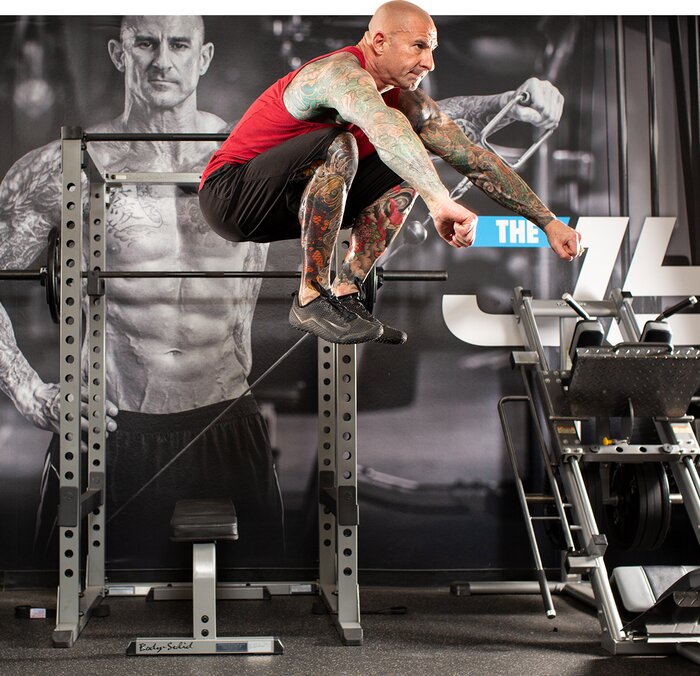
Summertime has always been one of the most significant reasons to take care of body shape. If the excessive pounds are hiding your six-pack abs and muscular arms from the world, it is time to embark on the cutting routine, to get ready for a beach season. A properly managed cutting workout plan and nutrition will make the right accents on the right body features.
What is cutting?
When losing the fat ‘armor’, you don’t just get rid of annoying pounds, the muscle mass, so carefully built up, evaporates as well. That’s why the fitness world coined the term ‘cutting’ to relate to the weight loss routine while preserving muscle mass as much as possible. A viable cutting workout plan consists of a carefully-planned workout and nutrition to keep the muscles and decrease the fat levels.
Is cutting and losing weight the same?

Although these terms are often used interchangeably, they are not one and the same.
Weight loss is a long process, not necessarily connected to sports. It can be performed by regulating the menu and balancing the calorie intake. When the body’s need for calories isn’t met, it starts using the available storage of fat and muscle mass. As a result, the person loses weight and enjoys the lightness of life. The weight loss process, when built correctly, should turn into a lifestyle, with balanced nutrition and regular physical activities.
Cutting, however, is a bit different. Obviously, its aim is to lose fat excess, however, the accent is kept on the preservation of muscle mass, choosing the right cutting workout plan, and filling up the diet with enough protein.
When do you need cutting?
Cutting is used by professional trainees, after bulking up (as it inevitably leads to some fat gains), athletes, and just trainee-to-be individuals, who are into tweaking their shape and lowering the amount of fat tissue. The plan of workouts depends on fat percentages and differs for men and for women:
- Men: a healthy body fat percentage is within 10-17%, which gets up to 20% when aging. Depending on your goal, you can do the cutting around these numbers. For the majority of men, 10-12% will make the body leaner and will be just enough for staying on the healthy side. Although athletes may need to go lower than 10% before the competitions.
- Women: a healthy body fat percentage is significantly higher – around 21-31% due to anatomic differences. Yet the athletes may need around 14-20%. The exact percentage is just a matter of personal comfort.
Cutting is typically temporary in order to reach the perfection of the forms before certain events or just to keep the weight within healthy limits.
A cutting phase typically lasts two-three months, and there is no point in doing it all year round. Once the ideal ratio of fat is achieved, you can just keep maintaining the muscle mass.
Another important aspect to consider is the amount of fat to lose in a week or money to be on the safe side.
According to recommendations, a healthy weight loss is about 1-2 pounds a week, depending on the initial physical characteristics. Given the typical cutting period takes 8-16 weeks, you can lose 8+ pounds during this period.
If you wanted to lose faster, as the summertime is just around the corner, remember, that quick results tend to have a reversible function.
How to compile a cutting phase workout plan?

In order to minimize muscle loss, the cutting plan should include cardio ,loss of calories and strength training, muscle-building exercise.
While strength training for cutting is quite a typical choice, cardio is often left in the shade, which is one of the major mistakes.
Cardio is any kind of exercise that elevates the heart rate to 140-160 BMP, burns a lot of calories during the session, and raises metabolic rate. Those who are not in favor of long-term steady cardio training can benefit greatly from HIIT workouts, which stand for high-intensity interval training. HIIT combines two valuable characteristics – a high number of calories burnt per session and the short time required for the training – around 15 minutes.
Yet another benefit is an after-session effect, as high-intensity cutting workouts make a resting metabolic rate higher, allowing you to burn calories and fat deposits throughout the day.
One of the pitfalls to expect from HIIT is muscle soreness, as it requires a great deal of energy outburst and muscle performance, thus, it may not be the best choice for a beginner cutting plan.
How to perform HIIT?
The logic behind HIIT is to perform at the interval of maximum energy outburst with rest periods. Short outbursts will take 90-95% of max heart rate, and the periods of rest – 60-75%.
A typical session of HIIT will last from 15-25 minutes, depending on your endurance and abilities.
As an example: cycling is one of the effective cardio trainings. However, it is often a low-intensity workout. With the HIIT approach, you can reap all the benefits from:
60 seconds of low-intensity (regular) cycling combined with 20 seconds of a cycling sprint. The repetitions should last for 10-15 minutes, with short energy bursts, giving out all the energy possible.
The typical HIIT workouts can be performed with outside running, treadmill running, cycling, or any other kind of at-home cut plan or gym-based workouts.
Running HIIT routine
- Warming up stage – 5-minute jogging
- Workout – 1 min moderate running (60-70%) of max heart rate + 20-30 seconds sprint with max strength output + getting back to a 1-minute moderate pace. You need to perform the circle 10 times.
- Cooling down – 5-minute jogging, and a walk.
When reading, this routine seems pretty simple, yet when you try doing it, a 3+ cycle will seem quite a challenge.
The 20-30 seconds sprint may be replaced with a more specific distance, like 100 meters (depending on your initial fitness level).
How to combine strength training and HIIT?

The best cutting workout plan will include both types of workouts – cardio (HIIT) for burning calories, and thus fat, and strength training, to maintain muscle form.
The frequency depends on your working schedule, yet it’s recommended to take turns – 3 days of HIIT and 3 days of strength training. You can also combine both in one day, as HIIT takes little time to perform (yet, considering your energy levels), thus having gym cutting routine and strength training.
The takeaway
Fat cutting workouts give a chance to tweak the shape, eliminating the extra fat deposits and preserving the muscle mass. It is an essential way to maintain long-term muscle growth and comes down to proper nutrition and a workout plan for cutting. While you may encounter the strength trainings being recommended for the cutting stage, HIIT will help to burn calories, thus reducing the fat tissue faster.
Proper nutrition plus regular cardio and strength training plus good sleep make perfectly shaped body complexion for summer.
















